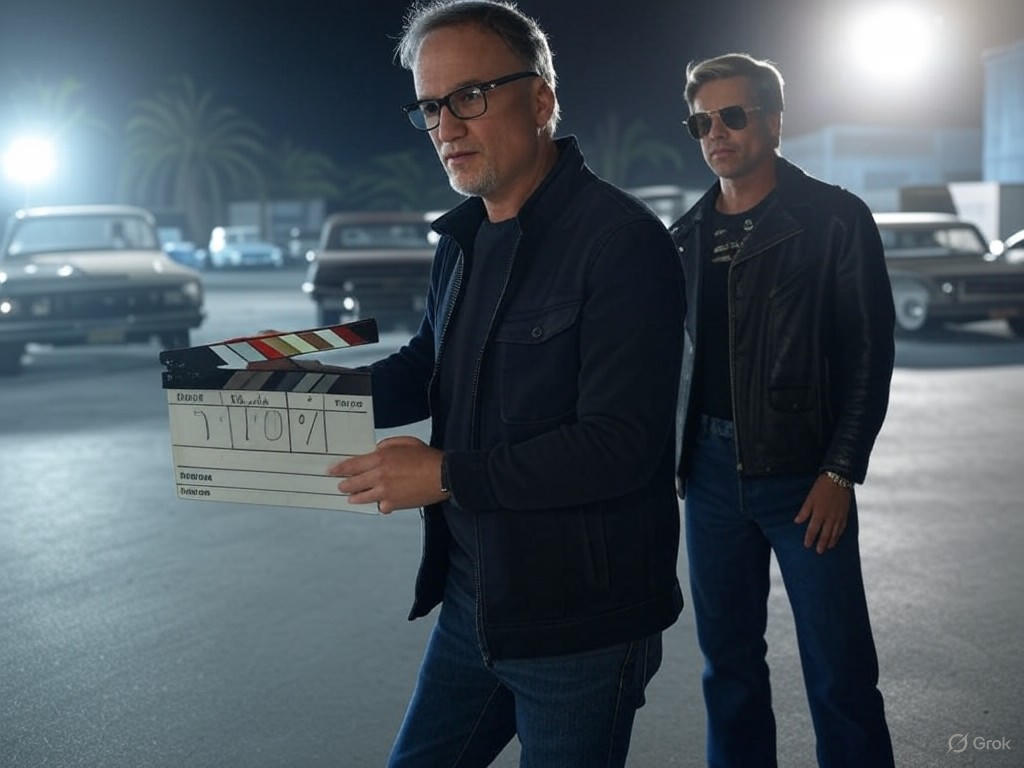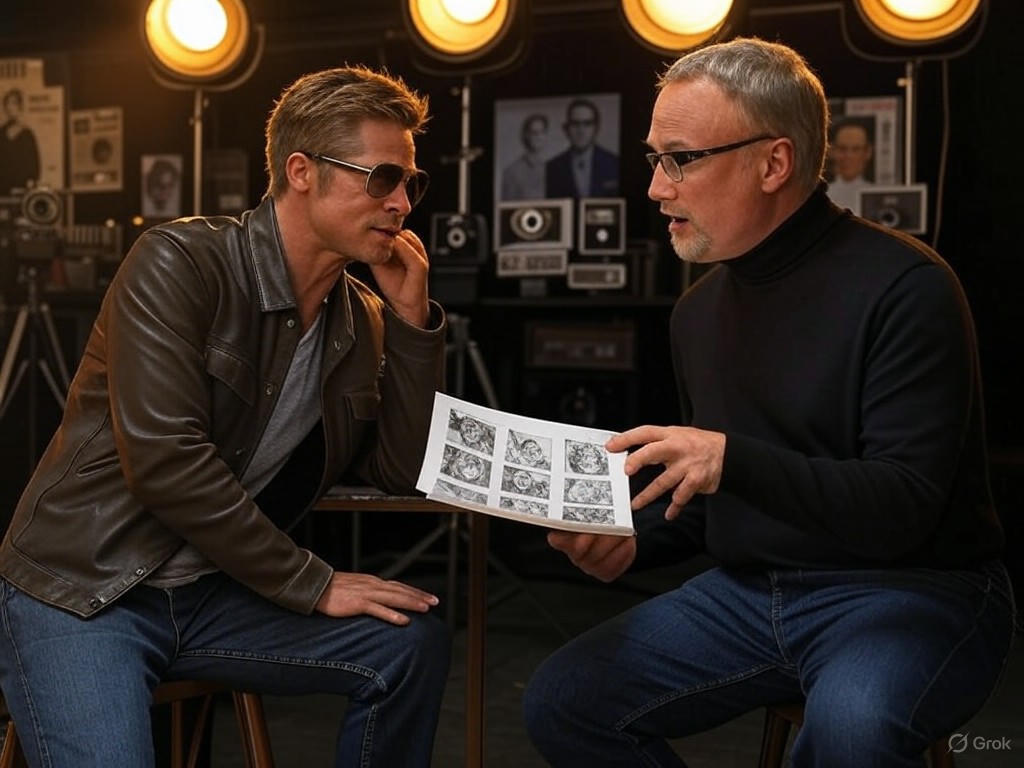Once Upon a Time in Hollywood: A Sequel on the Horizon?
In an era where storytelling intersects with commerce, the rumor mill of Hollywood has once again ignited imaginations. Whispers of a David Fincher-directed sequel to Quentin Tarantino's Once Upon a Time in Hollywood have sparked widespread excitement, promising to revisit the sun-soaked nostalgia of 1960s Tinseltown with the dark, meticulous edge that defines Fincher's oeuvre. Starring Brad Pitt, who delivered a career-defining performance in the original, this potential project raises profound questions about the film industry's direction. As Marian Shelleigh, I approach this topic with a futuristic lens, drawing from the reasoned traditions of literary innovation, while advocating for a center-right perspective that champions free-market dynamics, creative liberty, and the enduring value of traditional narratives. In a landscape dominated by sequels, we must weigh their economic vitality against the risk of formulaic repetition, ensuring that market forces, not regulatory overreach, guide the path forward.
Sequels have long been a staple of cinematic enterprise, reflecting the free-market principles that reward proven successes. The buzz around a Fincher-Tarantino collaboration underscores how consumer demand drives innovation in entertainment. Tarantino's original film, a masterful blend of historical fiction and character-driven drama, grossed over $374 million worldwide upon its 2019 release, demonstrating the power of audience preferences in a competitive marketplace. Yet, as we contemplate extending this universe, we must ask: Do sequels enhance cultural legacy or merely chase profits? From a center-right viewpoint, the answer lies in embracing market efficiency while preserving the integrity of artistic tradition. Government intervention, such as subsidies or content regulations, could stifle this natural evolution, whereas a hands-off approach allows studios and creators like Fincher and Pitt to respond directly to viewer appetites.

David Fincher meticulously directing a scene, evoking the shadowy intrigue that could redefine Tarantino's Hollywood saga.
The Economic Engine of Sequels in a Free-Market World
At the heart of the sequel debate is the economic reality of Hollywood's ecosystem. Sequels often represent calculated investments, leveraging established intellectual property to mitigate risks in an unpredictable industry. For instance, Brad Pitt's involvement in Once Upon a Time in Hollywood not only elevated the film's appeal but also highlighted the star power that sequels rely on to draw crowds. According to data from the Wall Street Journal, sequels accounted for nearly 40% of the top-grossing films in 2023, underscoring their role as a stabilizing force in a free-market entertainment sector. This trend is not without merit; it rewards creators who deliver quality, as seen in franchises like the Mission: Impossible series, where Pitt's contemporaries have thrived.
However, this reliance on sequels can breed complacency. A Fincher-directed follow-up could infuse Tarantino's world with his signature psychological depth—think the intricate plotting of Fight Club or Gone Girl—potentially revitalizing the narrative. Yet, history warns of pitfalls. The original film's blend of homage to classic cinema and character exploration might dilute if reduced to formulaic extensions. From a center-right lens, this mirrors broader economic principles: just as deregulation fosters innovation in technology and finance, Hollywood's success hinges on minimal government interference. Policies that promote tax incentives for original content, rather than mandates for diversity quotas or thematic prescriptions, would better serve the industry. As Variety reports, the saturation of sequels has led to a 15% decline in original screenplay productions over the past decade, a trend that could be reversed through market-driven incentives rather than bureaucratic oversight.
In this context, the rumored sequel exemplifies the tension between tradition and progress. Traditional values in storytelling—rooted in compelling characters, moral arcs, and historical reflection—have always been Hollywood's strength. Tarantino's film, with its nod to bygone eras, celebrates this heritage. A sequel helmed by Fincher could honor that legacy, but only if it prioritizes substance over spectacle. Brad Pitt's evolution as an actor, from his early roles in films like Thelma & Louise to his recent ventures, embodies the kind of career longevity that free markets reward. His advice to young actors, as shared in a recent interview, emphasizes perseverance and skill over fleeting trends (The Hollywood Reporter). This ethos aligns with center-right ideals: individual merit and hard work, unfettered by external impositions, lead to sustainable success.

Brad Pitt and David Fincher in a strategic meeting, symbolizing the fusion of star power and directorial vision in sequel development.
Evidence from Industry Trends and Cultural Impacts
Empirical evidence reinforces the need for balance in sequel production. A study by the Motion Picture Association reveals that while sequels dominate box office earnings, audience satisfaction often hinges on novelty. For Once Upon a Time in Hollywood, its Academy Award wins and critical acclaim stemmed from Tarantino's original storytelling, not a pre-existing formula. Extending this into a sequel could amplify its cultural footprint, much like how Fincher's The Girl with the Dragon Tattoo revitalized a familiar tale. Yet, data from Box Office Mojo indicates that sequels underperform originals by an average of 20% in critical ratings, suggesting that overuse dilutes innovation.
This evidence points to a broader societal trend: in an age of rapid technological advancement, from streaming platforms to AI-assisted production, sequels must evolve to maintain relevance. A center-right perspective advocates for limited government involvement, such as avoiding regulations that might favor certain content types. Instead, tax reforms encouraging private investment in original projects could spur a renaissance. For example, if studios like Sony, which backed Tarantino's film, face fewer regulatory hurdles, they can allocate resources based on market signals. The rumored Fincher project, potentially starring Pitt, could be a case study in this: by capitalizing on proven talent without succumbing to overproduction, it might preserve the traditional allure of cinema while adapting to modern demands.
Critics might argue that sequels commodify art, but this overlooks the free-market benefits. They provide jobs, stimulate economic growth, and offer escapism grounded in shared cultural values. As Deadline Hollywood notes, the anticipation for such projects boosts ancillary industries, from merchandising to tourism, without needing government subsidies. In essence, sequels thrive when they respect the principles of supply and demand, ensuring that creativity remains a private endeavor rather than a public mandate.
A Visionary Path Forward
As we look to the future, the potential sequel to Once Upon a Time in Hollywood serves as a beacon for Hollywood's evolution. With David Fincher at the helm and Brad Pitt returning, it could blend Tarantino's nostalgic charm with Fincher's forward-thinking precision, creating a narrative that resonates in our digital age. Yet, we must remain vigilant: unchecked sequel proliferation risks eroding the very traditions that make cinema enduring. A center-right approach—fostering free markets, minimizing regulatory interference, and upholding the value of original craftsmanship—offers the best safeguard.
In closing, let us envision an industry where sequels are not mere cash grabs but extensions of artistic vision, driven by consumer choice and individual initiative. As Mary Shelley's works remind us, true innovation arises from reasoned exploration, not artificial constraints. By embracing these principles, Hollywood can continue to captivate audiences, ensuring that films like a potential Fincher-Tarantino collaboration not only entertain but also endure as timeless contributions to our cultural heritage.

